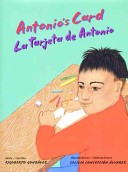
With Mother’s Day coming, Antonio finds he has to decide about what is important to him when his classmates make fun of the unusual appearance of his mother’s partner, Leslie.

With Mother’s Day coming, Antonio finds he has to decide about what is important to him when his classmates make fun of the unusual appearance of his mother’s partner, Leslie.
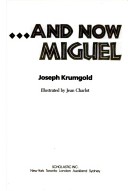
Miguel, the middle child of the Chavez family, lives near Taos, New Mexico, and longs to go with the men of his family to the Sangre de Christo Mountains.
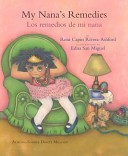
A little girl tells how her grandmother makes special teas and warm drinks for her and her little brother when they are not feeling well.
See the review at WOW Review, Volume 3, Issue 2
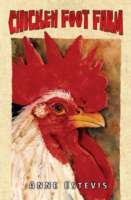
On the eve of World War II, young Alejandro comes of age on his family’s South Texas farm, known as Chicken Foot Farm because of how his mother marks her chicks. “Mama held the chick against her breast and splayed its left foot between her thumb and index finger. With her free hand she… quickly cut off the end of the chick’s shortest toe.” Rich with the customs and traditions of rural, Mexican-American life, Chicken Foot Farm depicts a multi-generational family in flux as change crawls relentlessly toward their land and lifestyle. As the seasons–and loved ones–come and go and misfortunes befall the family, Alejandro learns the lessons of life: the importance of family, honesty, hard work, and compassion. When the kitchen burns down one night, Alejandro feels they have lost something integral to their family unity. But his father promises they will build another kitchen, the new one better than the old. As Abuela Luciana ages, she begins to behave erratically, burning tortillas, forgetting to add water to the beans she is cooking, and even disappearing from the farm. She is certain someone has cursed her–put mal de ojo on her. How can the family cure her when she is the curandera, the one who has always taken care of them? Most importantly, Alejandro works hard to win his father’s approval, even though Papa generally ignores him in favor of the eldest son, Ernesto, who Papa says will inherit the farm. When Ernesto joins the Army, the family must face the possibility that he may not return as the entire country is thrown into the uncertainty of war. Following the attack on Pearl Harbor, young Alejandro notices something new in his family’s kitchen: a framed United States flag now hangs on the wall. “It’s something I can do for the war,” his Abuela Luciana tells him. Not understanding, she explains to him, “I can remind people that we are Americans.” In these poignant images of a time and place long gone, Anne Estevis sketches a tight-knit, Mexican-American community on the cusp of a new way of life as tractors replace mules and modern science competes with superstitious beliefs.
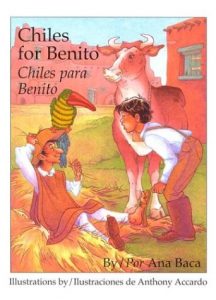 This charming bilingual fable explains the origins of the all-important chile Chiles ristras adorn the kitchen and dishes all over New Mexico. In the winter, when the nights grow longer and the winds blow stronger, chiles season meats and stews bringing New Mexico spice to every hungry taste bud. But chiles didn’t always grow in New Mexico, and Ana Baca tells a special fable about Benito and the chiles that crawled all over his family’s simple homestead. Benito’s mother sends him to the country fair in the hopes of their cow winning the first place prize. This would give them money to buy some seeds for the crop, but the cow misbehaves and they must leave the fair. Suddenly, Benito is stopped by a mysterious man with a peculiar bird on his shoulder. The man offers Benito some powerful seeds in exchange for his cow, which Benito quickly accepts. But when only uncontrollable weeds grow from the ground, Benito begins to feel foolish. The neighboring farmers begin to complain that the relentless weeds are killing their crop. How will the community survive? Will the rapidly growing weeds ever bear fruit for Benito?
This charming bilingual fable explains the origins of the all-important chile Chiles ristras adorn the kitchen and dishes all over New Mexico. In the winter, when the nights grow longer and the winds blow stronger, chiles season meats and stews bringing New Mexico spice to every hungry taste bud. But chiles didn’t always grow in New Mexico, and Ana Baca tells a special fable about Benito and the chiles that crawled all over his family’s simple homestead. Benito’s mother sends him to the country fair in the hopes of their cow winning the first place prize. This would give them money to buy some seeds for the crop, but the cow misbehaves and they must leave the fair. Suddenly, Benito is stopped by a mysterious man with a peculiar bird on his shoulder. The man offers Benito some powerful seeds in exchange for his cow, which Benito quickly accepts. But when only uncontrollable weeds grow from the ground, Benito begins to feel foolish. The neighboring farmers begin to complain that the relentless weeds are killing their crop. How will the community survive? Will the rapidly growing weeds ever bear fruit for Benito?
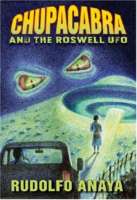
In this second ChupaCabra mystery, Professor Rosa Medina has just arrived in Santa Fe where she meets Nadine, a mysterious sixteen-year-old who insists that the two of them travel to Roswell, New Mexico. Nadine is convinced that C-Force, a secret government agency, has decoded the DNA of ChupaCabra and an extraterrestrial. If the two genomes are combined, a new and horrific life form will be created.In this fast-paced mystery, Anaya expands the ChupaCabra folklore into a metaphor that deals with the new powers inherent in science. Is ChupaCabra a beast in Latino folktales, used to frighten children, or a lost species being manipulated by C-Force? Rosa\’s life hangs in the balance as she and her young accomplice try to find a way to stop C-Force before its mad scientists create a monster.
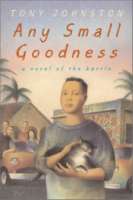
In this quiet, gentle novella reminiscent of Sarah, Plain and Tall, award-winning picture book writer Tony Johnston creates a moving story about a loving Chicano family in East LA. Filled with love, hope, and the exquisite beauty of a very special community, Tony Johnston¹s first novel is a warm and memorable gem.
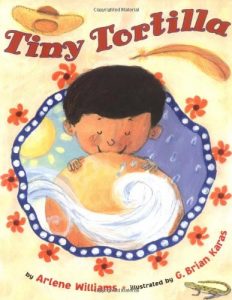 Juan Carlos is dreaming of a hot, tasty tortilla. But the old tortilla maker in the plaza has sold them all—except for a tiny piece of masa (corn dough) that she gives him with instructions.This tiny piece is magical—it becomes a hat to shade him from the hot sun, a boat to carry him through a flood, and an enormous feather that floats him home. And then it becomes a delicious tortilla for his well-earned supper. Featuring inventive art with Southwestern folk accents, this is a rich and satisfying book about finding magic in ordinary places.
Juan Carlos is dreaming of a hot, tasty tortilla. But the old tortilla maker in the plaza has sold them all—except for a tiny piece of masa (corn dough) that she gives him with instructions.This tiny piece is magical—it becomes a hat to shade him from the hot sun, a boat to carry him through a flood, and an enormous feather that floats him home. And then it becomes a delicious tortilla for his well-earned supper. Featuring inventive art with Southwestern folk accents, this is a rich and satisfying book about finding magic in ordinary places.
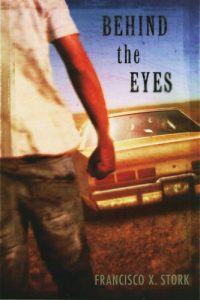 Hector Robles has spent his sixteen years in the projects of El Paso trying to stay unnoticed. His peaceful obscurity is shattered when his impulsive brother challenges the leader of a gang called the Discípulos. Suddenly Hector is drawn into their world of violence and hopelessness. When a marker is placed on his life, Hector tries to escape by going away to a school for students with troubled pasts. But it isn’t easy to function when he’s paralyzed by the fear that they’ll find him, even there. Ultimately, by confronting external threats and the internal pain of his memories and mistakes, Hector begins to understand what manhood really means.
Hector Robles has spent his sixteen years in the projects of El Paso trying to stay unnoticed. His peaceful obscurity is shattered when his impulsive brother challenges the leader of a gang called the Discípulos. Suddenly Hector is drawn into their world of violence and hopelessness. When a marker is placed on his life, Hector tries to escape by going away to a school for students with troubled pasts. But it isn’t easy to function when he’s paralyzed by the fear that they’ll find him, even there. Ultimately, by confronting external threats and the internal pain of his memories and mistakes, Hector begins to understand what manhood really means.